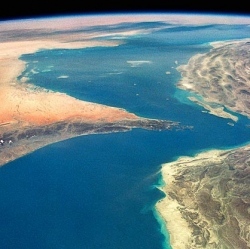
A SpaceX Dragon capsule that helped prepare the International Space Station for future commercial astronaut flights has returned to Earth after a stay of more than a month. A robotic arm released the unmanned capsule packed with 3,000 pounds of cargo. The capsule then fired thrusters several times to move a safe distance away from the station orbiting about 250 miles up.
"Thank you very much for bringing all the science, all the important payloads and all the important to cargo to the station," said Japanese astronaut Takuya Onishi, an Expedition 48 flight engineer.
The departure began a less than six-hour journey that culminated in a Pacific Ocean splashdown at 11:47 a.m. EDT, about 300 miles southwest of Baja, California.
The Dragon launched from Cape Canaveral early July 18 on a Falcon 9 rocket and berthed at the station two days later.
Among the 5,000 pound of cargo it delivered was a docking ring that will enable astronauts to visit the the orbiting research complex in commercial capsules SpaceX and Boeing are developing under NASA’s Commercial Crew Program.
SpaceX’s Crew Dragon and Boeing’s CST-100 Starliner are targeting test flights to the ISS with two-person crews late next year and in early 2018, respectively.
NASA astronauts Jeff Williams and Kate Rubins installed the docking ring, called International Docking Adapter-2, or IDA-2, during a spacewalk last Friday.
The Dragon is the only spacecraft flying today that can return large amounts of cargo to Earth.
Among the cargo brought back from space Friday were a dozen mice from a Japanese science experiment — the first brought home alive in a Dragon. Samples from mice euthanized as part of an experiment by pharmaceutical company Eli Lilly also were on board.
Results were returned from an experiment that studied the behavior of heart cells in microgravity, and from research into the composition of microbes in the human digestive system, NASA said. Findings from both could help keep astronauts healthy during deep space exploration missions.
Recovery crews planned to lift the Dragon onto a ship and return it to port in Long Beach, California, where time-sensitive cargo like the mice would be removed. The spacecraft then will be shipped to a SpaceX facility in McGregor, Texas, for post-flight processing.
The mission was SpaceX’s ninth of 20 planned under a NASA resupply contract worth up to $3.1 billion. The company’s 10th mission under the contract is expected this fall.
Before that, Orbital ATK hopes to launch supplies in a Cygnus spacecraft late next month from Virginia’s Eastern Shore, lifting off on a redesigned Antares rocket flying for the first time since a failure nearly two years ago.
